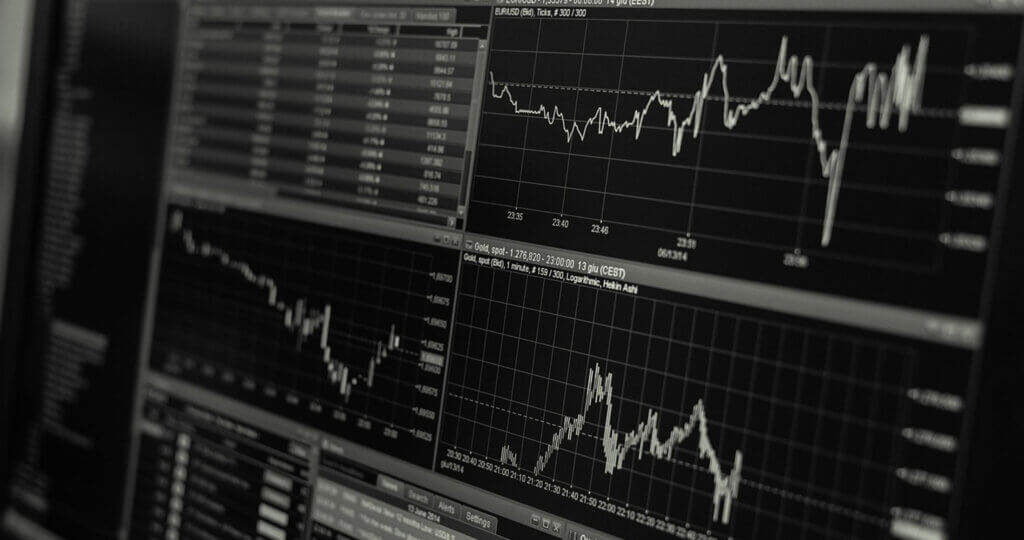During the quarter I had the opportunity to answer some questions from readers of GuruFocus.com. What follows is an excerpted version of that Q&A. (For the complete interview click here.)
At Oakmark, we are long-term investors. We attempt to identify growing businesses that are managed to benefit their shareholders. We will purchase stock in those businesses only when priced substantially below our estimate of intrinsic value. After purchase, we patiently wait for the gap between stock price and intrinsic value to close.
Q: Most stocks that have shown consistent earnings and revenue growth have generated impressive returns both recently and longer term. Most are now selling at their highest P/E ratios of the past decade. Don’t they look pretty expensive? Are you worried about the P/E ratio given modest growth expectations? What’s your suggestion to individual investors who own these stocks, or who are considering buying them?
A: Yes, most stocks have shown unsustainably high returns over the past six years. If you own stocks today expecting them to again triple in the next six years, I strongly believe you’ll be disappointed. Though interesting, whether or not stocks continue to match the recent gains isn’t really what an investor’s decision should hinge on.
An investor today can sit on the sidelines, with capital in cash earning nothing, or can lend that money to the U.S. government for 10 years and earn 2% annually. Lending to risky credits increases the yield by less than it has historically, as does lending for longer time periods. I think stocks compare quite favorably to those options. The S&P 500 yields more than a 10-year bond, and is likely to grow both earnings and dividends. Current P/Es, though higher than the recent past, are only slightly higher than their mid-teens long-term average. Compared to bonds, stocks have a higher current yield, and unlike bonds are likely to be worth more in a decade than they are today. Additionally, unlike bonds, stocks give some protection against inflation.
I believe price is the most underappreciated determinant of the riskiness of an investment. At today’s yields, I believe bonds are a risky investment. Yes, you know what the price will be at maturity, but you don’t know how much of a price decline you might suffer prior to maturity, and though you know the nominal return, you don’t know the real return (adjusted for inflation). I think investors who own bonds to reduce the risk level of their portfolios are also likely to be disappointed.
Stocks, to me, look fairly priced. P/Es are slightly above average, but other investment opportunities appear much less attractive than they have historically. Fairly priced doesn’t mean sell, it means you should expect returns consistent with historical returns, or something like 4 or 5 percentage points more than bonds. I think this argues for investors to return to their asset allocation targets. If you were smart enough to recognize 2008 as the opportunity of a generation, and tilted your portfolio more toward equities than your allocation targets suggested, then it might be wise to return to your target by trimming equity holdings today. Unfortunately, most investors face the opposite problem – they sold in 2008 when their targets suggested they should be buying. So now, despite a tripling for stocks, they still are below their targeted equity level. To that person, I would give the same advice – return to your target allocation. I believe that for most investors, returning to long-run targets still means buying, not selling.
Q: Please comment on your view of American International Group Inc. (AIG) going forward and on your estimates in growth in BV/Share for the next 5-10 years.
A: At the end of March, AIG’s stated book value was $80 per share. Most analysts tend to discount stated book and instead focus on book value ex- AOCI and DTA, which is just $61. Oversimplifying, that means excluding unrealized gains in its bond portfolio and excluding the value of its deferred tax asset (because of historical losses, AIG won’t be a cash taxpayer for years). Even using the $61 number, AIG stock at $58, to us looks inexpensive because we believe that an insurance company with a valuable brand name ought to be worth somewhat more than book value.
Looking out seven years, let’s assume that AIG averages after-tax earnings of $6 per year, or a total of $42 of income. That level of income would be enough to exhaust its tax loss carryforwards, so the $11 DTA would turn to cash. Additionally, over seven years most of the unrealized bond gain would also be realized. There will no longer be a reason to report three separate book value numbers. The $80 GAAP book would grow to $122, and the other book value numbers would also grow to roughly that same number (for this example I’m ignoring the small dividend AIG currently pays). On that basis alone, AIG stock would be positioned to more than double over seven years just by returning to book value.
What that analysis ignores, however, is what management will do with the excess capital the company earns. One of the reasons we own AIG is that management has demonstrated a willingness to grow by shrinking – that is to grow per-share value by reducing the shares outstanding rather that attempting to grow the size and value of the total company. Because AIG sells for less than book value, each share it repurchases increases the book value of the remaining shares. Because of that, our expectation is that seven years from now AIG will have fewer shares outstanding than it has today, and book value per-share will be higher than the numbers in the prior paragraph.
Q: What are your thoughts on NOV as a business, its competitive advantages and its earning power in the future?
A: National Oilwell Varco (NOV) is a leading oil service company with dominant share in deep water drilling. I wouldn’t waste much ink trying to argue this is a fantastic business, but because of strong market share, over a cycle NOV has earned a decent return on capital. Right now the oil industry has pulled back on drilling, especially deep water drilling. But NOV has a very strong balance sheet and the stock sells for less than book value. We expect the price of oil to be higher five years from now and with a higher commodity price, also expect higher drilling activity. When that activity returns, NOV is highly likely to capture its share, and again earn a high return on invested capital. Importantly, the strong balance sheet gives it the ability to not only survive the current environment, but to opportunistically take advantage of companies that don’t enjoy an equally strong financial position. As we wait for a drilling recovery, NOV should remain decently profitable from its aftermarket business, so even in a tough environment we expect book value per-share to continue growing.
Q: FNF Group announced their intention to do an IPO of BKF. What advantage or disadvantage is this for shareholders? Do you believe the competitive structure of the title insurance industry has changed since 2008? How plausible is it that title insurers enjoy less competition and a sustained improvement in ROCs once mortgage originations improve?
A: When companies own largely unrelated businesses, we generally believe the market will place a higher value on two pure plays than they will on one company that owns both. We also believe it is generally easier to hire and retain top quality management if they can be CEOs rather than divisional Presidents. So, we almost always view spinoff announcements as favorable.
In the case of FNF, investors have been applying much higher P/E multiples to rapidly growing data analytics firms like Black Knight than to insurers, so we believe the value of Black Knight inside of FNF has been somewhat hidden and will be exposed via the spinoff.
FNF’s basic business is title insurance, and they are the industry leader. Title insurance has been a consolidating business, so industry dynamics should be somewhat improved versus pre-recession conditions. I think some of that improvement has been hard to see because mortgage originations have fallen and the mix between refinancing and purchases has shifted heavily toward refinancing (this matters because the revenue on a purchase is about twice that of a refinancing and the margin is about 50% higher).
Trying to predict next year’s mortgage origination volume is a game we have no interest in playing. But trying to estimate what long-term averages are for originations is relatively easy to do, and deviating sharply from those averages would require changes in living habits we don’t anticipate. The kids can only live in their parents’ basements for so long.
Our valuation for FNF is based on long-term home purchase assumptions combined with refinancing falling to historically average levels. Just like the kids have to eventually move to their own homes, existing homeowners can’t keep saving money by refinancing every year. Given the much higher profitability from insuring the title for a purchase compared to a refinancing, our long-term forecast is for both much higher revenue and higher margins. I think our biggest difference from investors who don’t own FNF is that we are willing to invest for a high probability outcome that may take a while to occur, where most investors don’t think about owning a stock for much more than a year.
Q: You own Amazon. Historically, Amazon has enjoyed considerable cost and pricing advantages. As you’ve mentioned, part of the bull case for Amazon is that they derive a significant portion of their sales fulfilling orders for independent sellers. By doing that, is Amazon forgoing some of the pricing advantages they provide to customers? How vulnerable are they to being undercut by other large retailers?
A: Amazon (AMZN) is a company we have long admired, but only recently were we afforded an opportunity to purchase it at a lower price-to-sales ratio than the average bricks and mortar store (defining sales as gross market value of all items sold on its website). We have found price-to-sales to be a useful valuation metric within the retail industry, and given Amazon’s growth comes largely at the expense of traditional retailers, we believed Amazon should be priced at a higher ratio of sales than its competition.
Given Amazon’s scale, we believe they have a cost advantage versus all the retailers they compete with. Passing along those savings, in addition to currently accepting a very low profit margin in exchange for very rapid growth, allows customers to confidently shop at Amazon knowing they are getting a better price than most retailers offer.
Several years ago, Amazon started Marketplace, which opened its website to third party sellers. These retailers can now use Amazon’s brand to attract customers, and can hire Amazon to do order fulfillment as well. This has been a rapidly growing business, and last year accounted for over 40% of total units sold on Amazon.com. The way Amazon’s website works, the lowest price seller, whether Amazon or a third party, is the seller the customer will be directed to. Further, most customers are oblivious to whether Amazon or a third party is the actual seller. So not only does Marketplace not hurt the consumer perception of value, but when third parties undercut Amazon’s price, the consumer gets an even better deal.
With Marketplace I think of Amazon as, in a sense, being the mall owner and collecting the majority of a retailer’s profit as rent. The transaction isn’t as profitable to Amazon as it would be if they were the seller, but the transaction is also less risky since Amazon doesn’t have to invest in inventory. I don’t see Amazon stock as vulnerable because as business shifts to Marketplace, Amazon’s business becomes more like a royalty stream which deserves a much higher multiple than a retailer would deserve, offsetting the somewhat smaller profit. As a shareholder, I want Amazon’s sales to grow, and I’m indifferent whether they are the retailer or the mall owner.
Q: How long can APA and CHK survive current oil prices and be strong, compelling investments? Do you have an outlook for oil prices and if so, how do you derive it? How will oil speculators’ claims that the commodity will bounce back within a year, fit into these predictions?
A: As I’m writing this, oil has already recovered from its $40 low to about $60. At $60 oil, we expect all of our energy investments would be cash positive, so survival isn’t an issue. At $40 we couldn’t have made the same claim. We pay as little attention to price forecasts by oil speculators as we do to stock market predictions. It is amazing for both how little their track record seems to influence their willingness to continue making predictions.
One of the reasons we generally don’t have much invested in oil and gas companies is that the price of the commodity is the single largest determinant of intrinsic value and that price is completely out of the control of management, and is difficult to forecast with any degree of precision. Oil has traded at both $40 and $100 in the past year. At $40 most of the domestic exploration and production companies are nearly worthless. At $100 they are worth multiples of their current prices. So the commodity price really matters.
We look at two things to estimate the long-term market clearing price of oil. First, we look at the far out futures prices. When the spot price of oil fell to $40, the futures five years out still traded in the upper $60s. Additionally, analysis of marginal supply and demand for oil suggests that producers need a price in the $70s to earn an adequate return on new investment. One fact in the favor of oil and gas investors relative to other commodities is that the depletion rate of existing wells is high enough that the market requires new supply quickly or else a shortage would result. Unless you think that either the producers willingly invest at inadequate returns, that demand for oil suddenly falls sharply, or that new technology sharply reduces cost of production, prices need to recover to “normal” relatively quickly.
Our valuation of oil investments was based on a price in the $70s when oil was at $100 and is still based on that number. All that changes with lower spot prices is that short-term cash generated from earnings declines or is eliminated.
Additionally, one of our hurdles for investing in this area is that most managements focus almost exclusively on getting bigger. Most won’t repurchase stock when it is cheap, and very few will ever sell assets to strategic buyers. The reason we chose Apache (APA) and Chesapeake (CHK) from a large pool of undervalued energy stocks was that both managements had shown a willingness to sell assets and redeploy the proceeds by repurchasing shares. Though this reduces both the numerator and the denominator in the value per-share calculation, because of how their stocks were valued they were able to increase per-share value through these transactions.
As of 06/30/15 American International Group, Inc. represented 2.5% and 6.0%, National Oilwell Varco 0.8% and 0%, Fidelity National Financial, Inc. (FNF) 0% and 4.6%, Amazon.com, Inc. 2.2% and 4.5%, Apache Corp. 2.6% and 3.8%, and Chesapeake Energy Corp. 0.7% and 4.5% of the Oakmark Fund and Oakmark Select Fund’s respective total net assets. Portfolio holdings are subject to change without notice and are not intended as recommendations of individual stocks.
Click here to access the full list of holdings for The Oakmark Fund as of the most recent quarter-end.
Click here to access the full list of holdings for The Oakmark Select Fund as of the most recent quarter-end.
The Price-Earnings Ratio (“P/E”) is the most common measure of the expensiveness of a stock.
The S&P 500 Total Return Index is a market capitalization-weighted index of 500 large-capitalization stocks commonly used to represent the U.S. equity market. All returns reflect reinvested dividends and capital gains distributions. This index is unmanaged and investors cannot invest directly in this index.
Oakmark Select Fund: Because the Fund is non-diversified, the performance of each holding will have a greater impact on the Fund’s total return, and may make the Fund’s returns more volatile than a more diversified fund.
Oakmark Select Fund: The stocks of medium-sized companies tend to be more volatile than those of large companies and have underperformed the stocks of small and large companies during some periods.
The discussion of the Funds’ investments and investment strategy (including current investment themes, the portfolio managers’ research and investment process, and portfolio characteristics) represents the Funds’ investments and the views of the portfolio managers and Harris Associates L.P., the Funds’ investment adviser, at the time of this letter, and are subject to change without notice.








